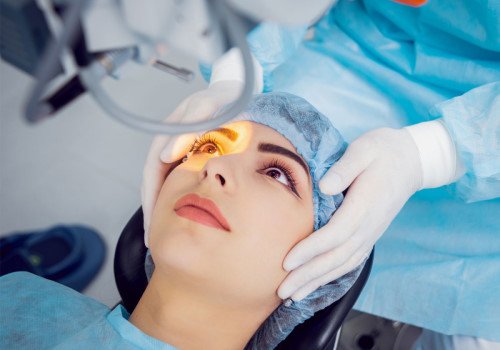
Glaucoma Treatment - Netra Eye Clinic
Glaucoma
Glaucoma is a group of eye conditions that damage the optic nerve, often caused by increased intraocular pressure. It can lead to permanent vision loss if untreated.
Symptoms: Early stages are often without symptoms. Later signs include loss of peripheral vision, eye pain, blurred vision, halos around lights, and headaches.
Causes: Elevated eye pressure, genetics, age (over 40), family history, diabetes, long-term steroid use, and eye injuries.
Treatment: Glaucoma treatment includes prescription eye drops, oral medications, laser therapy, or surgery to reduce eye pressure and prevent further damage.
Prevention: Regular comprehensive eye exams, managing health conditions, using protective eyewear, and adhering to treatment plans. Early detection and lifelong management can preserve vision and prevent complications


Glaucoma Care and Treatment
Glaucoma is a group of eye disorders that damage the optic nerve, often due to increased intraocular pressure. It develops gradually and can cause permanent vision loss if untreated.
Symptoms: Peripheral vision loss, eye pain, blurred vision, halos around lights, and nausea in acute cases
Causes: High eye pressure, age over 40, family history, diabetes, past eye injuries, and steroid use.
Treatment: Prescription eye drops, oral medications, laser procedures like trabeculoplasty, or surgery help reduce eye pressure and prevent nerve damage.
Prevention: Regular eye exams, managing health issues like diabetes or hypertension, using protective eyewear, and following prescribed treatments are key to preserving vision.
Types of Glaucoma
Glaucoma is a group of eye disorders that lead to optic nerve damage, often due to high intraocular pressure. It includes several types
Primary Open-Angle Glaucoma: The most common type, developing slowly without pain or noticeable vision loss initially. It occurs when the eye's drainage canals become less efficient, leading to pressure buildup.
Angle-Closure Glaucoma: Less common but more serious. It happens suddenly when the iris blocks drainage canals, causing a sharp rise in eye pressure. Symptoms include eye pain, redness, nausea, and blurry vision.
Normal-Tension Glaucoma: Optic nerve damage occurs even with normal eye pressure. It may be due to poor blood flow or increased optic nerve sensitivity.
Secondary Glaucoma: ICaused by other eye conditions or injuries such as inflammation, trauma, tumors, or prolonged steroid use. Treating the underlying cause is key to managing it effectively.


Glaucoma Management
Glaucoma management focuses on lowering intraocular pressure to prevent optic nerve damage and preserve vision. Early diagnosis through regular eye exams is critical, especially for those over 40 or with risk factors.
Monitoring: Routine eye pressure checks, optic nerve assessments, and visual field tests help track progression.
Medication: Prescription eye drops are the first line of defense. These reduce fluid production or improve fluid drainage. Oral medications may also be used.
Laser Therapy:Procedures like trabeculoplasty improve fluid outflow and reduce pressure.
Surgery: For advanced cases, surgeries such as trabeculectomy or drainage implants are recommended.
Frequently Asked Questions about Glaucoma Treatment
Answers to Your Most Common Questions on Glaucoma Care
